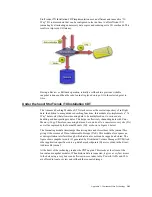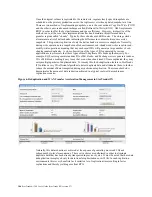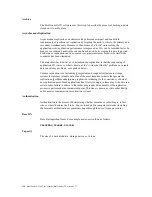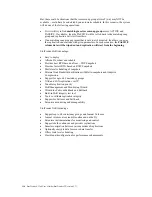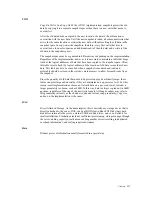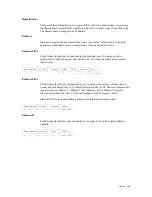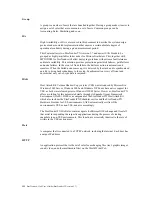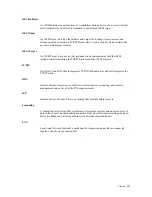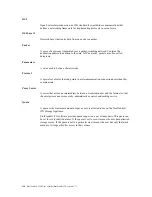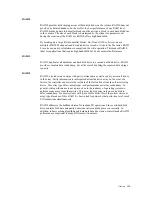
StorTrends® 1300 User’s Guide (StorTrends iTX version 2.7)
314
Archive
The StorTrends® iTX software uses this word to describe the process of backing up data
stored on it to a safe place.
Asynchronous Replication
Asynchronous replication can minimize the performance impact and bandwidth
requirements of synchronous replication by forgoing the need to write to the primary and
secondary simultaneously. Because of the absence of a “hold” on recording the
application write, application performance is improved, as I/Os can be recorded faster. In
many cases, reduced bandwidth costs can be achieved by leveraging this data lag period.
Furthermore, replication can be executed over greater distances because the time/write
constraint has been eliminated.
The major drawback, however, of asynchronous replication, is that the sequencing of
application I/O writes, or what is known as the “write order fidelity” problem, can create
data consistency problems, as explained below.
Volume replication is an increasingly important and sought-after feature in storage
systems that protect valuable data. One of the most important criteria that govern the
replication algorithms underpinning replication technology is the consistency of data at
any replication point. Since applications like Oracle
®
using a volume may write data in a
certain order, failure to adhere to that order may render data unusable if the replication
process is performed at an inconsistent point. This issue is known as write-order fidelity,
and is a major consideration in replication systems.
Authentication
Authentication is the process of determining whether someone or something is, in fact,
who or what it declares itself to be. In private and public computer networks (including
the Internet), authentication is commonly done through the use of logon passwords.
Base DN
Base Distinguished Name. For example, ami.com would be as follows:
CN=USERS,DC=AMI,DC=COM
Capacity
The size of a hard disk drive, storage device, or
Volume
.
Summary of Contents for ManageTrends 2.7
Page 18: ...StorTrends 1300 User s Guide StorTrends iTX version 2 7 xviii...
Page 24: ...StorTrends 1300 User s Guide StorTrends iTX version 2 7 6...
Page 33: ...Chapter Two Chassis Set Up 15 Accessing the Inside of the System...
Page 60: ...StorTrends 1300 User s Guide StorTrends iTX version 2 7 42...
Page 64: ...StorTrends 1300 User s Guide StorTrends iTX version 2 7 46...
Page 70: ...StorTrends 1300 User s Guide StorTrends iTX version 2 7 52...
Page 100: ...StorTrends 1300 User s Guide StorTrends iTX version 2 7 82...
Page 106: ...StorTrends 1300 User s Guide StorTrends iTX version 2 7 88 Control Panel...
Page 236: ...StorTrends 1300 User s Guide StorTrends iTX version 2 7 218...
Page 256: ...StorTrends 1300 User s Guide StorTrends iTX version 2 7 238...
Page 277: ...Appendix E Replication Overview 259 Snap Assisted Replication Navigating with ManageTrends...
Page 281: ...Appendix E Replication Overview 263 Replication SAR view Primary Box SAR view Secondary Box...
Page 285: ...Appendix E Replication Overview 267 After Failover Operation in Secondary Box...
Page 300: ...StorTrends 1300 User s Guide StorTrends iTX version 2 7 282...
Page 308: ...StorTrends 1300 User s Guide StorTrends iTX version 2 7 290...
Page 330: ...StorTrends 1300 User s Guide StorTrends iTX version 2 7 312...
Page 356: ...StorTrends 1300 User s Guide StorTrends iTX version 2 7 338...


